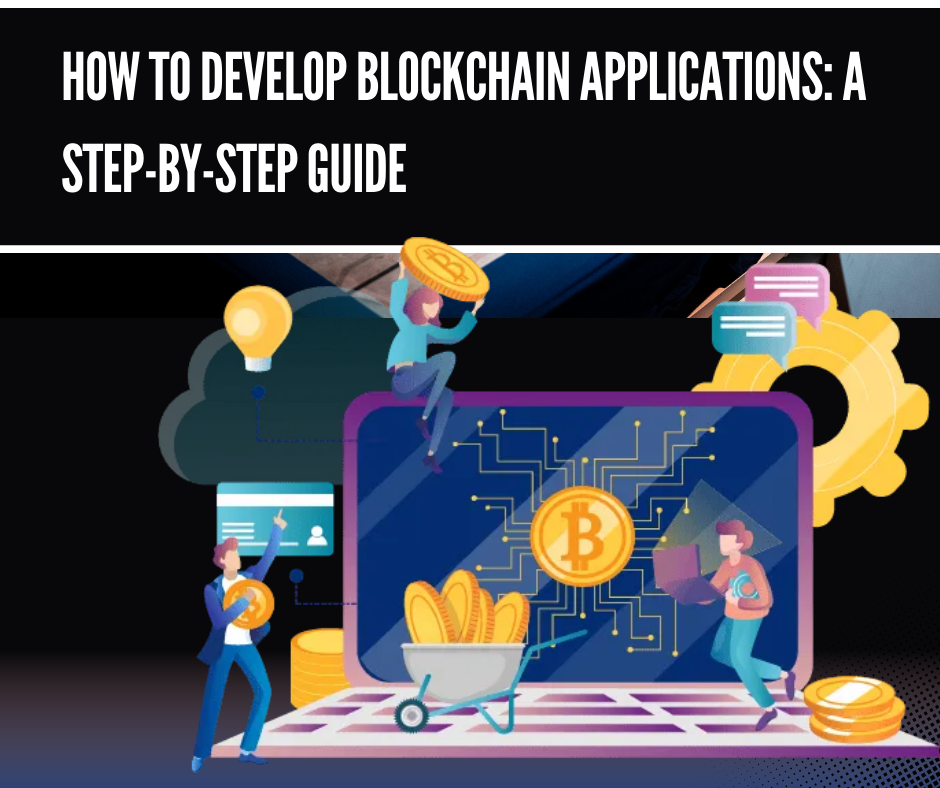Blockchain technology has revolutionized various industries, offering decentralized, secure, and transparent solutions for a wide range of applications. From financial transactions to supply chain management and beyond, blockchain applications have the potential to transform business processes and enhance security and efficiency. If you’re looking to harness the power of blockchain by developing your own applications, you’ve come to the right place. In this comprehensive guide, we’ll walk you through the step-by-step process of developing blockchain applications, from conceptualization to deployment. Additionally, we’ll explore how partnering with a blockchain app development company can streamline the development process and ensure the success of your project.
Table of Contents
ToggleStep 1: Define Your Use Case and Objectives
Identify the Problem
The first step in developing a blockchain application is to identify a real-world problem that can be solved or improved with blockchain technology. Whether it’s reducing fraud in financial transactions, improving transparency in supply chains, or enhancing data security in healthcare, clearly define the problem you aim to address.
Set Objectives
Once you’ve identified the problem, set specific objectives for your blockchain application. What are the key features and functionalities you want to include? What outcomes do you hope to achieve? Setting clear objectives will guide the development process and ensure that your application meets your business goals.
Step 2: Choose the Right Blockchain Platform
Understand Different Blockchain Platforms
There are various blockchain platforms available, each with its own unique features, capabilities, and use cases. Research and understand the differences between public blockchains (like Ethereum and Bitcoin) and private or permissioned blockchains (like Hyperledger Fabric and Corda).
Select the Appropriate Platform
Based on your use case and objectives, choose the blockchain platform that best aligns with your requirements. Consider factors such as scalability, security, consensus mechanisms, smart contract support, and community support when making your decision.
Step 3: Design the Architecture and Components
Define the Architecture
Design the architecture of your blockchain application, including the network topology, data structure, consensus mechanism, and node configuration. Determine whether you’ll use a single-chain or multi-chain architecture and plan how data will be stored, validated, and accessed.
Identify Components
Identify the key components of your blockchain application, such as nodes, smart contracts, wallets, and user interfaces. Define the interactions between these components and establish protocols for data exchange, transaction processing, and consensus mechanisms.
Step 4: Develop Smart Contracts and Backend Logic
Write Smart Contracts
Develop smart contracts that define the rules and logic of your blockchain application. Smart contracts are self-executing contracts with the terms of the agreement written in code. Use programming languages like Solidity (for Ethereum) or Chaincode (for Hyperledger Fabric) to write smart contracts.
Implement Backend Logic
Develop the backend logic of your blockchain application, including transaction processing, data validation, and business logic execution. Integrate smart contracts with the backend to ensure seamless interaction between the blockchain and external systems.
Step 5: Build the User Interface
Design the User Interface
Design the user interface (UI) of your blockchain application to provide an intuitive and engaging experience for users. Consider factors such as usability, accessibility, and visual appeal when designing UI elements.
Develop Frontend Components
Develop frontend components using web technologies like HTML, CSS, and JavaScript. Use frameworks like React, Angular, or Vue.js to build dynamic and responsive UI components that interact with the blockchain backend.
Step 6: Test and Debug the Application
Conduct Unit Testing
Conduct unit testing to ensure the functionality and correctness of individual components and modules. Test smart contracts, backend logic, and frontend components to identify and fix any bugs or errors.
Perform Integration Testing
Perform integration testing to verify the interactions between different components and ensure that they work together as expected. Test data exchange, transaction processing, and user interactions to validate the end-to-end functionality of the application.
Step 7: Deploy and Monitor the Application
Choose Deployment Environment
Choose the deployment environment for your blockchain application, whether it’s a public blockchain network, a private blockchain network, or a hybrid cloud environment. Consider factors such as security, scalability, and regulatory compliance when selecting the deployment environment.
Deploy the Application
Deploy your blockchain application to the chosen environment, following best practices for deployment and configuration. Ensure that all components are properly configured and that security measures such as encryption and access control are in place.
Monitor and Maintain the Application
Monitor the performance and health of your blockchain application to detect and address any issues or anomalies. Implement monitoring tools and alerts to track key metrics such as transaction throughput, latency, and resource utilization. Regularly update and maintain the application to ensure optimal performance and security.
Also Read : Step-by-Step Tutorial: Building Your Blockchain App from Scratch
Partnering with a Blockchain App Development Company
Developing blockchain applications can be complex and challenging, requiring specialized expertise in blockchain technology, cryptography, and distributed systems. Partnering with a blockchain app development company can provide several benefits:
- Expertise and Experience: Blockchain app development companies have extensive experience and expertise in developing blockchain applications across various industries and use cases.
- Specialized Services: These companies offer specialized services such as smart contract development, blockchain consulting, and custom application development tailored to your specific requirements.
- Access to Talent: By partnering with a blockchain app development company, you gain access to a team of skilled developers, blockchain architects, and domain experts who can guide you through every stage of the development process.
- Streamlined Development Process: Blockchain app development companies follow industry best practices and methodologies to streamline the development process and ensure the successful delivery of your project.
- Ongoing Support and Maintenance: After deployment, blockchain app development companies provide ongoing support and maintenance services to monitor and maintain the performance and security of your application.
In conclusion, developing blockchain applications requires careful planning, execution, and collaboration. By following the step-by-step guide outlined above and partnering with a reputable blockchain app development company, you can successfully build and deploy blockchain applications that unlock new opportunities and drive innovation in your business.



